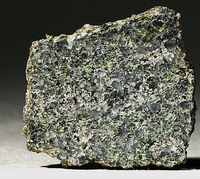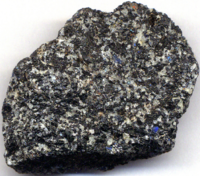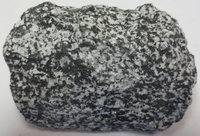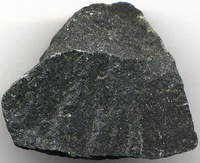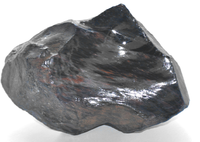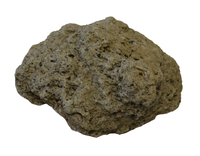Difference between revisions of "Igneous"
(→Examples) |
|||
| Line 17: | Line 17: | ||
|- | |- | ||
| style="height:20px; width:200px; text-align:center;" |[[Granite]] is an [[igneous]] rock with large interlocking [[Grain (Rock)|grains]]. | | style="height:20px; width:200px; text-align:center;" |[[Granite]] is an [[igneous]] rock with large interlocking [[Grain (Rock)|grains]]. | ||
| − | | style="height:20px; width:200px; text-align:center;" |[[Gabbro]] | + | | style="height:20px; width:200px; text-align:center;" |[[Gabbro]] is an [[intrusive]] [[igneous]] rock. |
| − | | style="height:20px; width:200px; text-align:center;" |[[Diorite]] | + | | style="height:20px; width:200px; text-align:center;" |[[Diorite]] cools very slowly underground so it has large [[crystal]]s. |
|} | |} | ||
Revision as of 09:43, 3 October 2018
Key Stage 3
Meaning
An igneous rock is a rock formed from magma or lava.
About Igneous Rocks
- When magma or lava freezes it is called an igneous rock.
- When the magma is trapped underground it freezes slowly and this makes very large cyrstals in the rock. This is called intrustive rock.
- When the lava comes out of the volcano it cools down and freezes quickly making small crystals. This is called extrusive rock.
Examples
| Granite is an igneous rock with large interlocking grains. | Gabbro is an intrusive igneous rock. | Diorite cools very slowly underground so it has large crystals. |
| Basalt forms from lava so it is an extrusive igneous rock. | Obsidian is an igneous rock that cools so quickly that crystals don't have any time to form at all. | Pumice bursts out of Volcanoes and gives of gases that make bubbles inside making it look like a sponge. |
